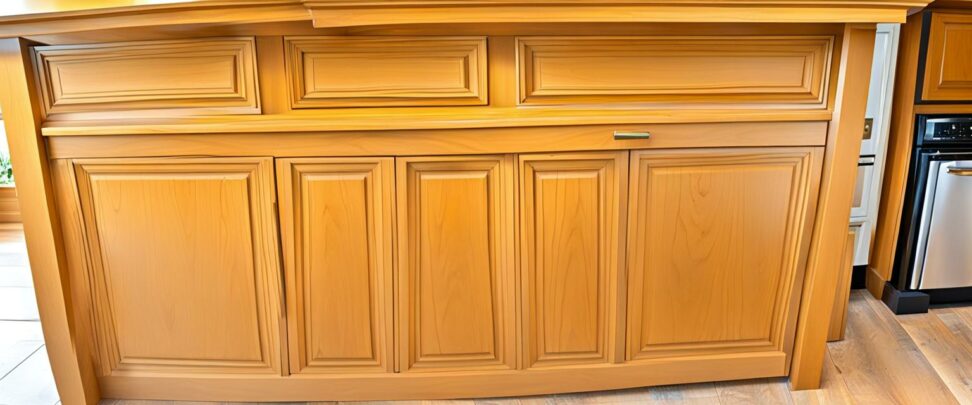How to Repair Peeling Kitchen Cabinets Like a Pro
Over time, kitchen cabinets can start to show their age through peeling paint and worn finishes. Restoring tired cabinets to their former glory might seem like a daunting task, but these step-by-step instructions will have you repairing peeling kitchen cabinets like a pro.
Repainting Provides an Easy Facelift Without Replacing Cabinets
Assess the Damage
Start by taking a close look at the peeling areas to determine if it is just the paint, or if the underlying wood or laminate is damaged. Look for any exposed raw wood, gouges, cracks or holes that may need filling before painting.

If the original finish is intact after scraping away loose paint, you likely just need to sand and repaint. Deep damage to the wood itself often requires more extensive work.
Supplies You'll Need
Gathering the right prep and painting supplies upfront makes the project go smoother:
- Paint scraper
- Coarse 80-120 grit sandpaper
- Tack cloths
- Wood filler
- Paint primer
- High-quality cabinet paint
- Foam brushes and sanding block
- Clear polyurethane (optional)
Prep Steps for Peeling Cabinets
Proper prep work ensures the new paint adheres smoothly and evenly.
Deep Cleaning
Remove all dirt, grease and grime from cabinet surfaces using a degreasing cleaner like TSP. Rinse thoroughly and let dry.
Sand Away Loose Paint
Use a paint scraper to remove any cracking or peeling paint. Then sand the entire cabinet box down to bare wood with 80-120 grit sandpaper. Always sand in the direction of the wood grain for best results.
Fill Any Holes and Imperfections
Inspect for any holes, cracks and dents in the sanded wood and fill with a quality wood filler compound. Let fully dry and sand smooth before priming.
Remove Dust
Use a tack cloth to wipe away any dust left over from sanding before painting.
Paint in Thin, Even Coats
Priming Preps for Paint Adhesion
After proper prep, apply 1-2 coats of a high-bond primer formulated for painting cabinets and woodwork. This helps the new paint stick to the surface.
Paint Using a Foam Brush
Use a high-quality acrylic latex enamel paint made specifically for cabinets. Apply in thin, even coats using a foam brush, allowing proper drying time between coats.
Lightly sanding between coats creates an ultra-smooth finish. Follow the manufacturer’s instructions for recommended coats—usually 2 to 3 does the trick.
Seal with Protective Clear Coat (Optional)
For added protection from moisture and daily wear-and-tear, apply 2-3 thin coats of a clear polyurethane over the cured paint. This durable topcoat extends the life of your painted cabinets.
Consider replacing outdated hardware like knobs and pulls to complete your cabinet facelift. Clean, modern hardware makes remodeled cabinets look brand new.
With these simple steps for prepping, painting and protecting cabinets, you can revive your kitchen in just a weekend. Proper materials and technique will have those peeling cabinets looking freshly painted for years to come.